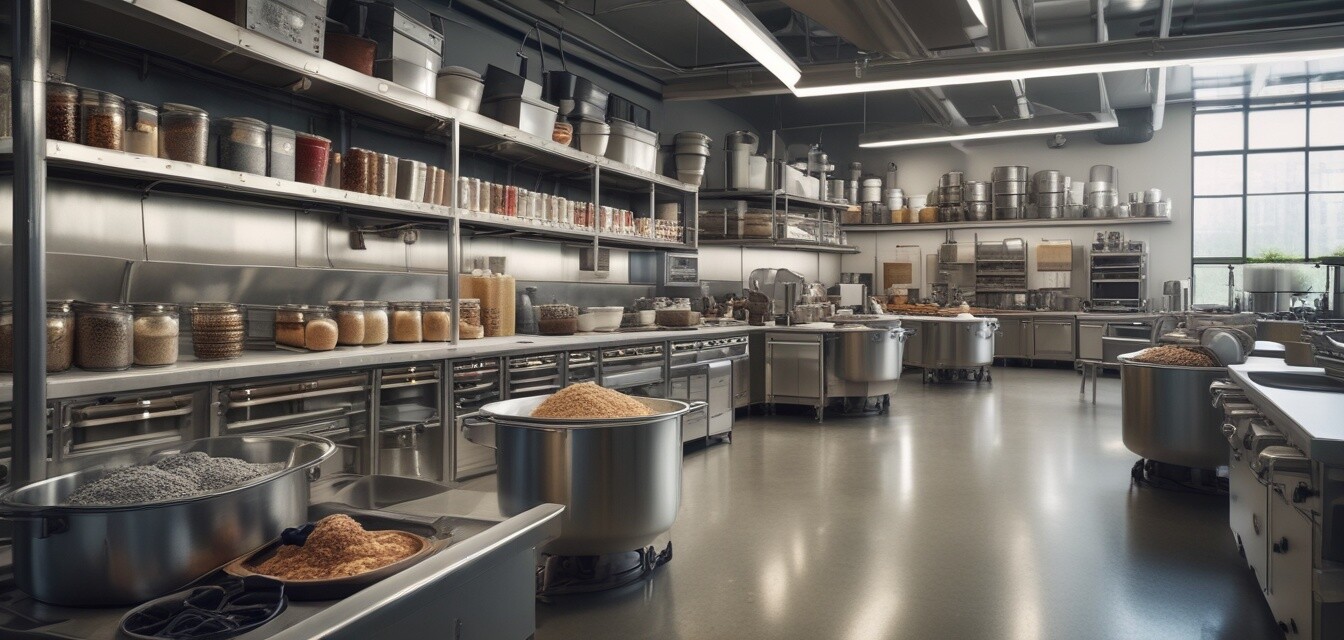
Disclosure: The FTC requires that this article indicate that it was created using AI and is not based on personal experience. It includes affiliate links, which means we may earn a commission if you purchase through these links at no extra cost to you. As Amazon Associates, we earn from qualifying purchases. Product recommendations and endorsements were generated by AI and do not reflect personal opinions or real-world use.
Essential Mixing Techniques for Baking in Bulk
Key Takeaways
- Understand the importance of mixing methods in bulk baking.
- Utilize industrial mixers for consistency in large batches.
- Learn tips for measuring ingredients accurately.
- Explore techniques to enhance ingredient incorporation.
- Know the best practices for maintaining texture and flavor.
Baking for a crowd is no small task, but with the right mixing techniques, you can achieve consistent and delicious results. Whether it's for a special occasion or a community event, understanding how to mix large quantities can save you time and ensure that every batch comes out perfectly. In this guide, we will explore essential mixing techniques tailored for bulk baking.
The importance of mixing in bulk baking
Mixing is at the heart of baking, particularly when it comes to larger quantities. Proper mixing ensures even distribution of ingredients, aiding in consistent texture and flavor across every serving. Here are some reasons why mastering these techniques is crucial:
- Consistency: Even mixing prevents uneven baking or separation of ingredients.
- Time efficiency: Mastering bulk techniques can streamline your workflow.
- Quality control: Uniformity in taste and texture enhances the overall quality of your baked goods.
Essential mixing methods for baking in bulk
There are several mixing techniques to consider when baking in large quantities. Each has its advantages and differs depending on your recipe.
| Mixing Method | Best For | Description |
|---|---|---|
| Manual Mixing | Breads and doughs | Using hands or a large spoon to combine ingredients, allowing for control over the mixture. |
| Stand Mixer | Cakes and batters | Utilizes various attachments to mix, knead, and whip ingredients efficiently. |
| Food Processor | Quick mixes | Ideal for quick blending of dry and wet ingredients, saving time with multiple batches. |
| Industrial Mixer | Large batches | Designed to handle heavy mixtures, providing powerful mixing for bulk quantities. |
1. Manual Mixing Techniques
Manual mixing, while labor-intensive, offers a unique touch, particularly for doughs. Here are some tips:
- Use the right tools: A sturdy spatula or wooden spoon can make a considerable difference.
- Incorporate air: Remember to fold instead of stir to retain the mixture's lightness.
- Focus on technique: When kneading dough, push and fold to build gluten effectively.
2. Maximizing Stand Mixers
Stand mixers are a game-changer for bulk baking. Here’s how to make the most of this tool:
- Choose the correct attachment: Use the whisk for airy mixtures and the paddle for dense batters.
- Don’t overmix: Follow your recipe for mixing times to avoid tough textures.
- Split batches if necessary: For extremely large quantities, keep in mind the mixer capacity.
3. Food Processor Techniques
The food processor can greatly reduce mixing time, especially for dry mixes. Use it effectively by:
- Adding ingredients gradually: To ensure even mixing, add wet and dry ingredients slowly.
- Pulse for control: Pulsing helps achieve the desired texture without over-processing.
- Cleaning between uses: Keep your food processor clean to avoid flavor contamination.
4. The Power of Industrial Mixers
For high-volume baking, investing in an industrial mixer can be beneficial:
- Capacity: These mixers can handle large batches without compromising quality.
- Versatility: They often come with multiple attachments for different mixing needs.
- Efficiency: Save time with high-speed mixing capabilities suitable for commercial use.
- Potential cost savings: They may allow for batch baking, reducing overall labor costs.
Measuring ingredients for consistency
Accurate measurements are vital in bulk baking. Here’s how to ensure precision:
- Use digital scales: For large quantities, a scale ensures you have exact amounts.
- Level measurements: Use a straight edge to level off flour and sugar in measuring cups for accuracy.
- Pre-measure ingredients: Have all your ingredients measured beforehand to streamline the mixing process.
Tips for ingredient incorporation
Properly incorporating ingredients can affect the final product. Here are some techniques:
- Room temperature ingredients: This allows for better mixing and a smoother batter.
- Gradual addition: Add dry ingredients slowly to wet mixtures to avoid clumping.
- Scrape the bowl: Regularly scrape down the sides of your mixing bowl to ensure even distribution of ingredients.
Maintaining flavor and texture
In bulk baking, it’s easy to lose sight of flavor and texture. Keep these tips in mind:
- Quality ingredients: Always use good-quality flour, eggs, and other essentials for the best results.
- Don’t overmix: Overmixing can lead to tough baked goods.
- Monitor baking time: Larger batches may require adjustments in baking time and temperature.
Pros
- Consistency in texture and flavor with proper techniques.
- Efficiency and time-saving with large quantities.
- Versatility in mixing methods to suit different recipes.
Cons
- Can be physically demanding, especially with manual methods.
- Requires investment in specialized equipment for larger batches.
- Risk of ingredient mismeasurement impacting final product.
Conclusion
Mastering these essential mixing techniques for baking in bulk will significantly enhance your ability to prepare delicious treats for a crowd. With a focus on consistency, accurate measuring, and effective incorporation of ingredients, you'll be well on your way to becoming a bulk baking pro. For more tips on cooking for groups, check out our articles on buying guides, or explore commercial-grade cooking products to elevate your kitchen setup.